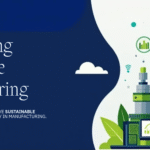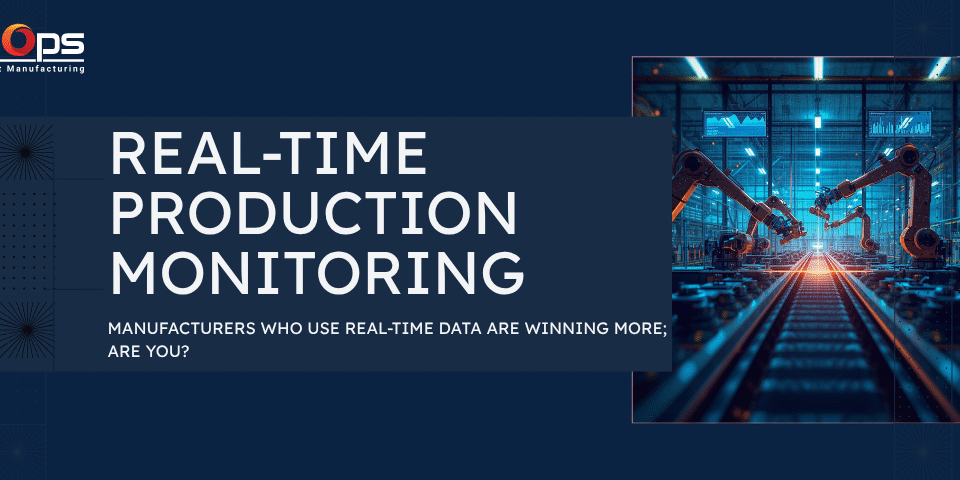
Industrial DataOps: The Backbone of AI-Driven Smart Manufacturing in 2025
May 19, 2025
Why Manufacturers Should Care About Sustainability?
June 11, 2025Why Smart Factory Transformation Is Slower Than It Should Be
The buzz around smart factory transformation is everywhere—and for good reason. From predictive maintenance and real-time monitoring to AI-driven automation, the benefits are massive. Industry 4.0 promises lightning-fast production, lower costs, and smarter decision-making.
But there’s a catch.
Many manufacturers begin their transformation journey with high expectations, only to find themselves stuck in a maze of disconnected systems, inconsistent data, and legacy infrastructure. Despite investing in sensors and software, they’re unable to tap into the full potential of smart manufacturing.
At iDataOps, we’ve worked with leading manufacturers who faced exactly this problem. And time and again, it comes down to one thing: data. Poor data practices, technical bottlenecks, and integration issues are the real roadblocks.
Let’s explore the 7 critical data challenges that are slowing down smart factory transformation—and what you can do to overcome them.
1. Legacy Systems That Can’t Communicate
Many factories still rely on decades-old machines that lack digital interfaces or connectivity. These legacy systems create massive data gaps and are notoriously difficult to integrate with modern platforms.
Challenge:
Outdated machines and control systems don’t produce real-time, usable data.
Solution:
-
Retrofit with IIoT adapters or smart sensors.
-
Deploy middleware that connects legacy systems to modern analytics tools.
-
Implement edge gateways to collect, standardize, and transmit data to cloud systems.
2. Data Overload Without Direction
Smart factories generate enormous volumes of data—but volume doesn’t equal value. Without clear strategy and context, data becomes noise.
Challenge:
Too much raw data, too little insight. Analysis becomes reactive instead of proactive.
Solution:
-
Prioritize use-case-driven data collection.
-
Adopt real-time analytics and edge processing to reduce latency.
-
Create a data governance framework to ensure relevance, quality, and accessibility.
3. Siloed Systems and Inaccessible Data
Different departments (production, quality, maintenance, logistics) often work with disconnected platforms and formats, leading to inconsistent insights.
Challenge:
Critical decisions are delayed or made on incomplete data.
Solution:
-
Build a unified data platform (e.g., a data lake or data fabric).
-
Use APIs and integration platforms to connect ERP, MES, and IoT systems.
-
Implement standardized schemas for consistent analytics across teams.
4. Cybersecurity Risks in a Hyperconnected Factory
Connecting machines and systems increases your exposure to cyberattacks, data breaches, and ransomware.
Challenge:
Poorly secured data pipelines and endpoints can threaten operations.
Solution:
-
Enforce a zero-trust security model across your OT and IT environments.
-
Regularly audit systems and apply patches.
-
Use end-to-end encryption, identity management, and network segmentation.
5. Workforce Skill Gaps
Smart factory tech is powerful—but only if your people know how to use it. Unfortunately, many teams lack training in data science, IoT, and advanced analytics.
Challenge:
Tech-savvy machines, but a digitally unprepared workforce.
Solution:
-
Invest in hands-on training and continuous upskilling.
-
Empower teams with user-friendly tools and dashboards.
-
Partner with educational institutions to develop future-ready talent pipelines.
6. Lack of Data Standards and Interoperability
Different equipment vendors use different data formats and protocols, making integration time-consuming and error-prone.
Challenge:
Inconsistent or incompatible data leads to reporting and automation issues.
Solution:
-
Standardize with industry protocols like OPC UA, MQTT, and REST APIs.
-
Normalize incoming data with ETL pipelines or real-time transformation tools.
-
Maintain a centralized data catalog to align business and technical definitions.
7. High Costs and Uncertain ROI
Smart factory upgrades require serious investment in hardware, software, and people—and ROI isn’t always immediate.
Challenge:
Stakeholders hesitate without quick, tangible returns.
Solution:
-
Start small with pilot projects focused on specific KPIs (e.g., OEE improvement, downtime reduction).
-
Use modular, cloud-based tools that reduce upfront CapEx.
-
Track ROI with real-time dashboards to build internal momentum for scaling.
Conclusion: Transform Your Factory with a Smart Data Strategy
Smart factory transformation is not just about connecting machines—it’s about connecting the data that drives better decisions, smoother operations, and continuous improvement.
By tackling the data challenges outlined above, manufacturers can unlock the full potential of Industry 4.0 and move from reactive to predictive, from fragmented to fully integrated.
How iDataOps Helps Manufacturers Drive Smart Factory Transformation
At iDataOps, we empower manufacturers to unlock the full potential of their data. We don’t just solve problems—we build modern, resilient data ecosystems that scale with your business.
What We Offer:
-
Legacy-to-cloud data integration without disruption
-
Smart factory data pipelines for real-time insights
-
Advanced analytics and machine learning for predictive maintenance and quality control
-
Secure, compliant data governance tailored for manufacturing
-
Low-code tools that let your teams build dashboards and automations—fast
-
Change management support to upskill teams and drive adoption
Whether you’re launching your first smart factory pilot or scaling a global Industry 4.0 initiative, iDataOps brings the strategy, engineering, and enablement you need.
Ready to unlock real value from your data?
Let’s build your smart factory—one intelligent data stream at a time.



